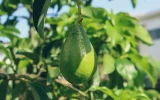How To Start an Avocado Farm from Scratch: Ultimate Guide
Starting an avocado farm from scratch involves a blend of agricultural knowledge and practical business skills. It's essential to understand the growth requirements of avocado trees, including climate, soil, and water needs. Additionally, it's crucial to plan for the long-term, as avocado trees take several years to mature.
To start an avocado farm:
- Ensure climate is suitable (mild winters, moderate summers)
- Choose fertile, well-drained soil
- Select avocado varieties fit for your region
- Plant young trees with adequate spacing
- Set up efficient irrigation
- Prune, fertilize, and manage pests regularly
- Harvest when ripe
- Create a marketing plan
Prepare for a waiting game, as it can take up to three to four years for your trees to bear fruit. But here's the twist: you'll need more than one tree for pollination to produce those delicious avocados. Intrigued about turning your land into an avocado paradise?
Summary
- Initial investment varies by region, but expect costs around $7,000 - $10,000 per acre, including land preparation, trees, irrigation, and labor. Secure necessary funding.
- Select a location with ideal climate conditions for avocados - warm temperatures between 60-85°F, moderate humidity, annual rainfall of 50–100 inches. Test soil pH to ensure levels between 6.0 and 6.5.
- Purchase grafted avocado trees for quicker fruit production, typically bearing fruit within 2–3 years.
- Develop plans for growing techniques like tree spacing, irrigation, fertilization and care practices to optimize yields.
- Create marketing strategies to promote your farm and sell your avocados through an online presence, local markets and events.
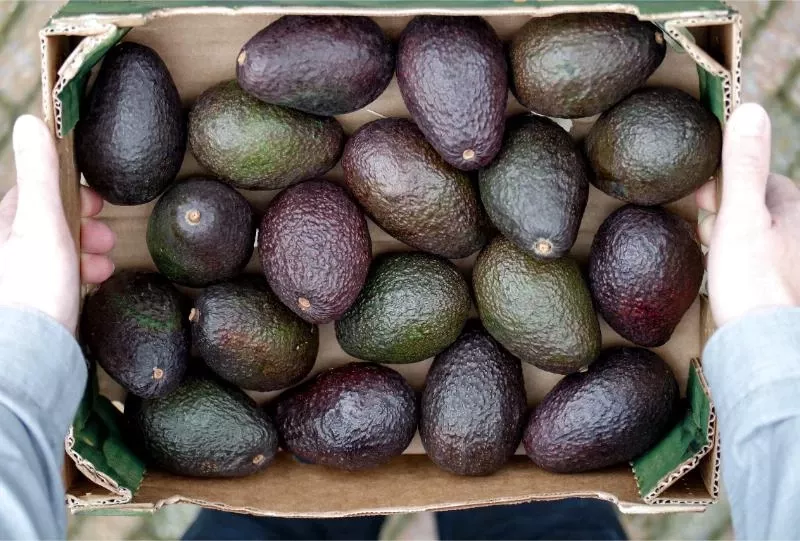
On this page:
- Plan for Your Avocado Farm
- Choose the Right Location and Avocado Variety
- Acquire and Prepare the Land
- Secure Funding for Your Farm
- Purchase Avocado Seeds or Seedlings
- Implement Irrigation and Fertilization
- Harvest and Process Your Avocados
- Market Your Avocado Products
- Comply With Legal Requirements
- Scale Your Avocado Business
| Starting an Avocado Farm | Quick Figures |
|---|---|
| Startup costs | $20,000 to $50,000 |
| Costs of production | $3,800 per acre |
| Trees per acre | 145 trees (traditional), 430 trees (high-density) |
| Trees per hectare | 100 trees (traditional), 550 trees (high-density) |
| Recommended-spacing | 20'x15' (traditional), 10'x10' (high-density) |
| Tree lifespan | 200 to 400 years |
| Time to maturity | 5–13 years (from seeds), 3–5 years (from grafted tree) |
| Average yield per tree | 90 to 225 pounds |
| Average yield per acre | 5,000 to 15,000 lbs |
| Average yield per hectare | 7 to 13 tonnes |
| Average profit margin | 10% to 30% of total revenue |
| Average profit per acre | $4,000 to $13,500 |
Plan for Your Avocado Farm
Your first step should be assessing the profitability of avocado farming. With the fruit's increasing demand, understanding the market size and growth potential is crucial. Avocado farming offers robust opportunities, and by evaluating its potential profitability, you can make an informed decision.
Next, consider the startup costs involved. Starting an avocado farm requires a significant investment, which varies depending on land, trees, equipment, and supplies. It's important to list all possible expenses and create a budget. You'll need an accurate forecast of your initial financial requirements, which you can establish by investigating the costs to start an avocado farm.
Selecting the right location is also a key step in your planning process. Identify areas with the ideal climate and soil pH for avocado trees, typically between 60°F and 85°F and a pH of 6 to 7.5. Use soil testing to ensure the land meets these conditions.
Is avocado farming profitable?
Avocado farming can be highly profitable, with a net profit per acre potentially ranging from $20,000 to $120,000 per year. The average profit margin across all avocado varieties is noted to be between 10% and 30%, emphasizing the general profitability of this venture.
Avocado profit per acre
The average yield ranges from 7,000 to 20,000 pounds per acre, translating to a gross revenue of $10,500 to $30,000 per acre at a market price of $1.50 per pound. After considering cultivation and maintenance costs ranging from $6,500 to $20,000 per acre, the net profit for avocado farmers can be between $4,000 and $13,500 per acre.
Cost to start an avocado farm
The total estimated cost ranges from $125,000 to $260,000, which includes expenses for land and infrastructure, equipment and machinery, labor and operational costs, seedling and planting, and irrigation. Additional expenses to consider include permits and licenses, soil testing and preparation, pest control, marketing and distribution, insurance, utilities, and initial administrative expenses.
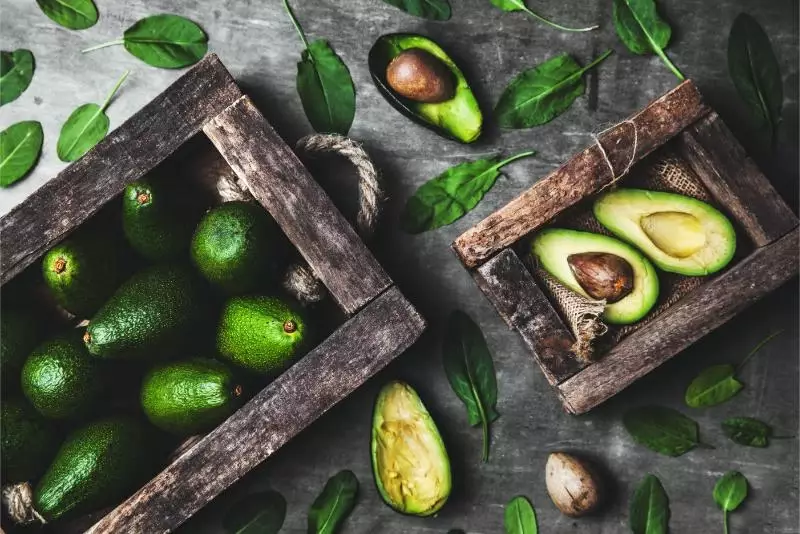
Choose the Right Location and Avocado Variety
Look for areas with a climate akin to the avocado's natural habitat in central and South America, which provides a warm and sunny environment throughout the year. Regions with mild temperatures and moderate humidity offer the best conditions for these trees to flourish.
Avocado trees flourish in temperatures between 60 to 85°F with moderate to high humidity levels (60-80%). They require full sun exposure for most of the day but benefit from some shade, especially in hot regions. Annual rainfall of 50–100 inches is ideal, and well-drained sandy loam soil is preferred.
For more information on the optimal environmental conditions for growing avocados, read the full article here.
When it comes to tree species, select one that matches your region's climate. Different avocado varieties each have their preferred growing conditions.
Acquire and Prepare the Land
After acquiring your land with well-drained soil, a soil test is imperative. This will determine if your soil's pH falls within the 6 to 7.5 range, optimal for avocado tree growth. Adjust soil conditions if necessary to achieve this range. Regularly monitoring the pH level and nutrient content of the soil could increase the speed at which your trees bear fruit.
Properly spacing your avocado trees affords them adequate light and nutrient intake. Consult the recommended spacing for avocado trees to ensure optimal growth and yield. Likewise, understanding the optimal number of avocado trees per acre or per hectare is essential for planning and maximizing your farm's output.
Consider the best season to plant. Timing influences the growth cycle, and planting during the best time to plant avocado trees ensures that your trees have the greatest chance at thriving. Start your avocado farm journey with these key steps in preparing your land, setting a strong foundation for a fruitful orchard.
Plant 145 to 430 trees per acre
Traditional spacing of 20'x15' allows for about 145 trees per acre, while high-density planting with 10'x10' spacing can accommodate up to 430 trees per acre. Factors such as soil quality, climate, water availability, and avocado variety (e.g., Hass, Fuerte, Reed, Pinkerton) affect the ideal density.
High-density planting can increase yields through better cross-pollination and efficient management but requires careful handling of pruning, pest control, and harvesting.
Grow up to 550 trees per hectare
High-density orchards can grow up to 550 trees per hectare, medium-density orchards around 285 trees, and traditional orchards about 100 trees. For more information on the optimal density of avocado trees per hectare, read the full article here.
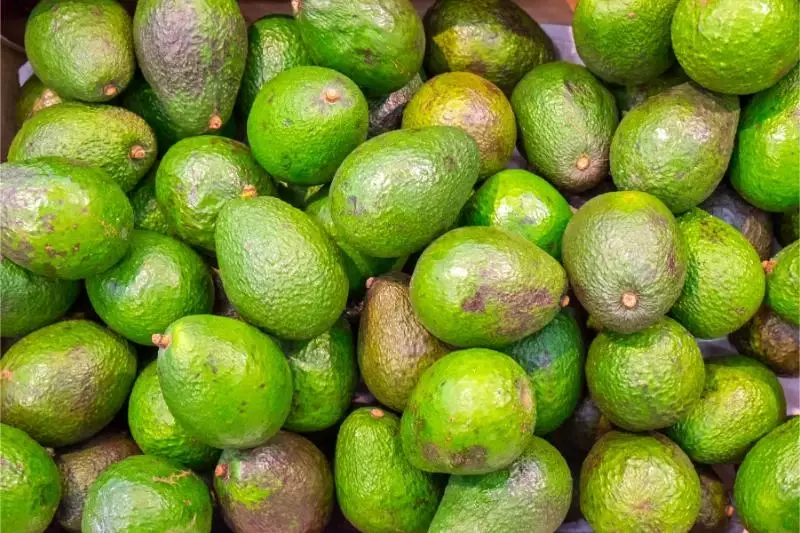
Secure Funding for Your Farm
You need financial resources to buy land, equipment, and avocado trees. Consider various financing options such as your own savings, bank that offer agricultural loans, and investors like private individuals or companies interested in agriculture.
You may also check with government agencies for any grants aimed at supporting agriculture. Agricultural organizations might offer subsidies or grants for sustainable farming practices.
Purchase Avocado Seeds or Seedlings
Seeds can be more cost-effective but take longer to bear fruit, whereas seedlings might offer a head start. Decide based on your timeline and budget. You can grow an avocado tree from seed but patience is key, as it could take several years to produce fruit.
How long does it take to grow an avocado?
If you start with an avocado seed, it typically takes anywhere from two to six weeks for the seed to sprout. During this time, you'll need to provide the right balance of water, warmth, and light. It's a process often done out of curiosity or as an educational experience, rather than for commercial fruit production.
Trees grown from seeds can take 5 to 13 years to mature and bear fruit. However, if you purchase a young tree from a nursery, it can produce fruit within 3 to 5 years. Key factors influencing this timeline include the variety of the tree, local climate, and care practices.
Avocado tree lifespan
Avocado trees can live up to 200-400 years. Their lifespan is influenced by factors like cultivar, environmental conditions, and care practices. This article details the avocado tree life cycle, from seed to seedling, vegetative growth, flowering, and fruit development. It emphasizes the importance of cultivar selection, environmental factors, and maintenance practices like pruning, fertilization, and pest control in determining the tree's lifespan.
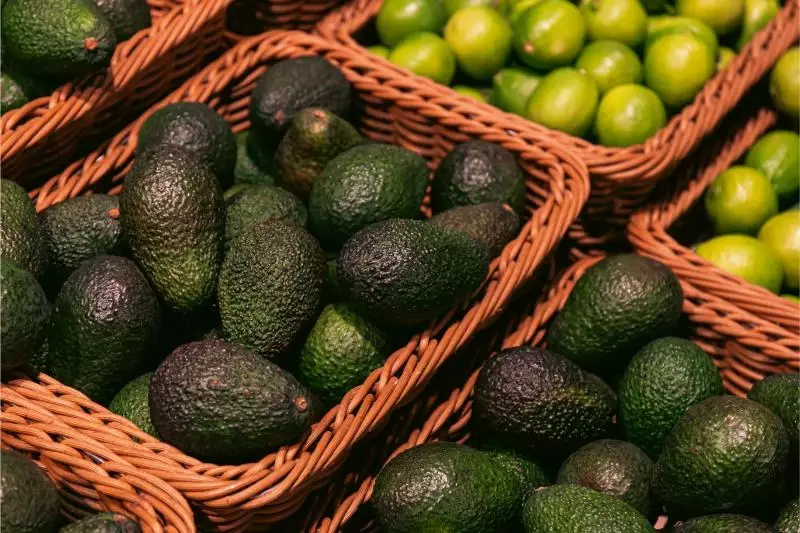
Implement Irrigation and Fertilization
Avocado trees need consistent moisture without becoming waterlogged. Develop an efficient irrigation system to maintain optimal soil moisture levels. Combine this with the right fertilization plan to nourish your trees and promote robust growth.
Make avocados bear fruit faster
To accelerate fruit production in avocado trees, use grafted trees for quicker fruiting, create a suitable microclimate, apply growth regulators, soil solarization for pest control, and use biostimulants and mycorrhizae for root health. It's also recommended to plant pollinator-friendly flowers, hand-pollinate in low bee areas, and use drip irrigation for even watering.
Pruning strategically and companion planting with nitrogen-rich legumes are also suggested. Here are more ways to make your avocado bear fruit faster.
How often avocado trees produce
Hass avocados usually produce fruit annually, Fuerte avocados biennially, and Reed avocados irregularly. Factors like tree health, pollination, and environmental conditions greatly influence the yield. Young trees focus on establishing roots and may not produce much fruit, while mature trees (around 13-15 years old) yield more consistently.
For more information on the factors affecting the frequency of fruit production in avocado trees, you can read the full article here.
Harvest and Process Your Avocados
Avocados are unique; they mature on the tree but ripen only after being picked. To ensure you get the creamiest, most flavorful avocados, you need to pick them when they've reached full size but are still firm.
Avocado trees usually bear fruit between December and May, with different varieties having specific seasons. For instance, Hass avocados typically become available in the spring and might continue to mature into the fall, while Fuerte starts in winter.
Ideally, you'll want to keep a close eye on the development of the fruit or consult a seasonal chart to determine what time of year avocado trees bear fruit.
When do avocado trees produce fruit?
Hass, Fuerte, Reed, Lamb Hass, Pinkerton, and Bacon varieties take 3 to 4 years, while Gwen and Ettinger varieties can produce fruit in 2 to 3 years. For more details about the varying timelines for fruit production in avocado trees, you can read the full article here.
How to identify ripe avocados
Avocados mature on the tree but ripen only after being picked. This article provides a harvest chart for different avocado varieties. Key indicators of ripeness include changes in skin color and texture, size, and firmness. The article also offers harvesting techniques, such as hand-picking and using a pole picker, and advises on post-harvest handling and storage to ensure the avocados ripen properly.

Market Your Avocado Products
Develop a marketing strategy. Your primary goal is to connect with customers and create demand for your avocados. Use social media to showcase your farming practices and the quality of your produce. High-quality images and engaging posts can attract potential customers and create a loyal fan base.
-
Understanding the average avocado yield per tree will help you set realistic sales targets. The Hass variety, known for consistent fruit production, yields between 150-300 lbs per year. Keep track on the productivity of your farm to project future sales volumes with accuracy. This information is indispensable when negotiating contracts or setting prices for your avocados.
-
Create a website to serve as the digital storefront for your farm. Include a blog where you talk about the different stages of avocado growth and share insights into the industry, such as notable avocado production by country. Having an online presence expands your reach and offers an educational aspect to your brand.
-
Additionally, consider the returns on your investment by evaluating the potential avocado yield per hectare. Hass avocados yield 7-13 tonnes per hectare, Fuerte 6-12 tonnes, Reed 8-12 tonnes, and Zutano 5-10 tonnes. This insight can help in financial planning and defining the scale of your farming operations.
-
Attend farmers' markets and local food events to engage directly with your community. Personal interactions foster trust and customer loyalty. Keep your pricing competitive, but also reflective of the quality and sustainability of your farming practices. Remember, the effort you invest in marketing your farm and products today establishes the foundation for your farm's future success.
Comply With Legal Requirements
-
Business registration: You’ll need to register your avocado farm as a business entity. Depending on your location, this could mean obtaining a Doing Business As (DBA) name or incorporating as a Limited Liability Company (LLC).
-
Land usage and zoning: Verify that your land is zoned for agricultural use. You’ll need to check with county officials to ensure you're compliant with local ordinances. (Missteps here can result in costly penalties.)
-
Water rights: If your farm will be using a significant amount of water, you may need water rights or permits. Make sure to understand the regulations regarding water use, as avocados require plenty of hydration.
-
Employment laws: If you plan on hiring workers, familiarize yourself with employment laws and worker safety regulations. You'll need to manage payroll taxes and comply with labor standards. (Your state’s labor department will have the necessary details.)
-
Pesticide use: Should your avocado farming involve pesticides, you're likely required to follow strict guidelines. This involves obtaining a license for pesticide application and adhering to environmental protection standards.
Permits and Licenses
Check if your state or country requires specific permits or licenses for farming operations, such as:
- Environmental permits
- Health and safety certifications
- Agricultural and produce handling licenses
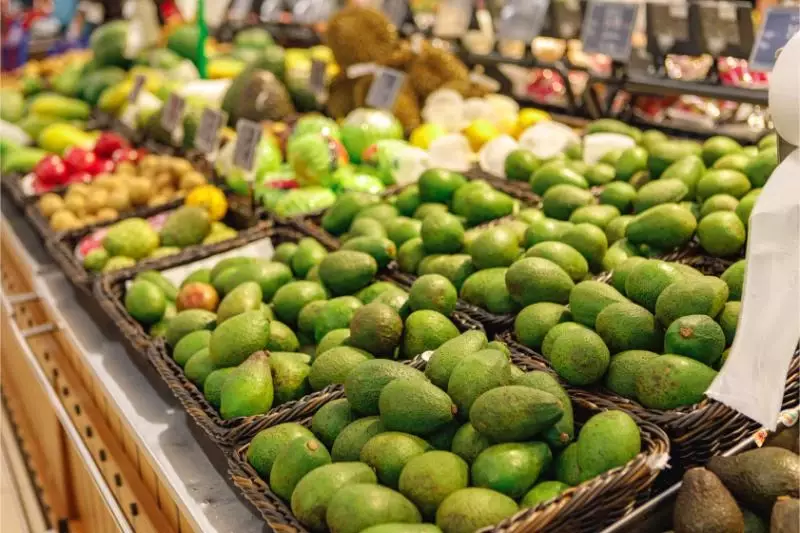
Scale Your Avocado Business
When it's time to scale your avocado farm, you'll want to start with a clear plan. Expansion requires thoughtful steps and might mean increasing your acreage or optimizing current yields. Consider the profit you can anticipate per acre of avocados when assessing the viability of expansion—this will guide your investment decisions.
-
Expand your cultivation area. Look into acquiring more land if your finances and market demand justify it. As you increase your farm's size, expect to extend labor and maintenance resources as well.
-
Optimize existing operations. Sometimes, scaling isn’t about size—it's about efficiency. Implement advanced farming techniques, improve irrigation systems, or invest in better crop management software.
-
Investing in staff training and development can go a long way in scaling your business, too. Trained employees bring in new ideas, leading to innovative ways to boost avocado production.
-
Additionally, dial into advanced marketing tactics and forge strong distribution partnerships. This will ensure your added production meets buyers effectively. Remember, learning from current trends can inform your scaling strategy, potentially increasing profits.
-
To financially sustain your growth, re-evaluate your budget, and if necessary, seek additional funding sources. Carefully choose what suits your farm's situation; this might be loans, investment, or plowing back profits.
-
Finally, adhere to sustainable farming practices even as you scale. Maintaining soil health and biodiversity ensures the long-term success of your avocado farm. Your customers will appreciate the eco-conscious effort, often translating into brand loyalty and increased sales.
